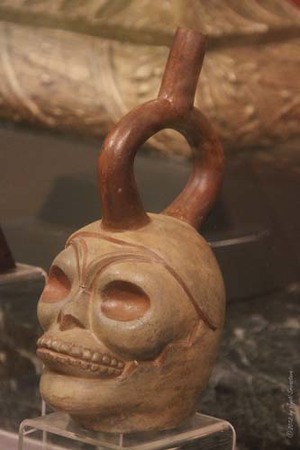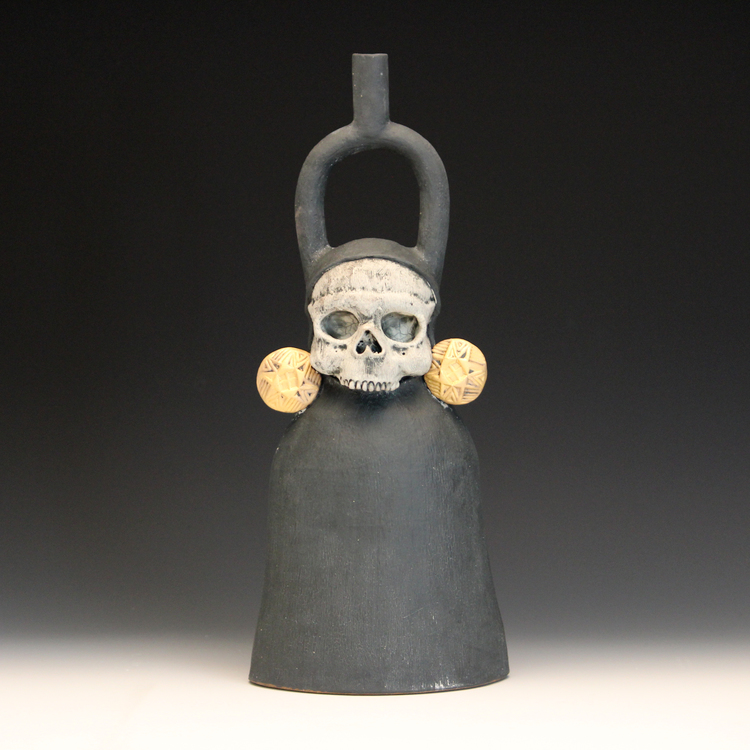Inca Stirrup Spout Vessel with Gold Ear Spools by Ryan Myers
Ryan Myers has shown with the Artisan Gallery for over a decade and his work continues to evolve and grow in new and exciting ways. His current show False Idols, now on view in our Cooler space, is no exception. Myers’ Pre-Columbian influences are brought to the fore front in his newest body of work. These pieces reinterpret motifs from ancient cultures, adopting form and assumed function.
The show feels like a collection of antiquities cataloged and placed caringly on display, but upon closer inspection it is evident the work is not a culmination of different cultures but carefully crafted work created by one artist in deferential reference to these ancient civilizations. Drawing influence from the diversity of ancient South American cultures allows Myers to play with a multitude of forms and imagery. Certain classic shapes are repeated throughout the collection including stirrup handles vessels, totemic deity figures, and anthropomorphic figures. The image of the feathered serpent Quetzalcoatl makes several appearances throughout the work, his twisting form wrapping its way across the decorated surfaces of vessels. Portrait jars are another design that is featured prominently in the show. Historically these jars were assumed to represent individuals of high status within the culture and were often found in burial sites. Myers has created several of these forms illustrating his distinct depiction of the human figure.

Examples of Pre Columbian stirrup vessels

Paralleling the form of these portrait jars are several stirrup handled jars depicting skeletal figures. One in particular Inca Stirrup Spout Vessel with Gold Ear Spools depicts a figure cloaked in black, the classic stirrup handle sits prominently atop the form and large gold luster ear spools project from the form denoting the high status of this individual. The skull is a motif found within ancient Pre Columbian art but is also prevalent within contemporary works of the same region. The symbol is ripe with meaning, most commonly thought of as a symbol of death and mortality, it can also stand as a reminder of the wonder of life, or a foreshadowing of imminent change. I find the ambiguity of this symbolism a wonderful parallel to the symbolism of the work in this show as a whole. The pieces reference ancient works but the meanings of these symbols are assumed from the limited knowledge we can construe from the artifacts these preliterate cultures left behind. Like these cultural artifacts Myers has layers of implied meaning within his contemporary “artifacts”. Many of the pieces have the feeling that they are made for ritualistic purposes, but that ritual is not something that is practiced in our society as a whole. Its ritualistic function is left open to the individual who chooses to invite one of these objects into their personal ritual.
Ann Orlowski
Assistant Art Director

